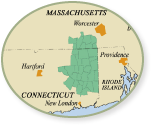Finding Beauty in January Freshly Fallen Snow
“On this day of bleak cold, the earth seems dead. Yet every northern field and hillside, like a child, has seeds and powers of growth locked within it. From cocoon to bur on a winter’s day, there is everywhere life, dormant but waiting,” By Edwin Way Teale, Jan. 7 entry from “Circle of the Seasons: The Journal of a Naturalist’s Year”
There is nothing quite like a fresh coating of snow to get me outdoors. The depth of the snow will determine my footwear, and for me anything over 10 inches will require snowshoes.
Deep snow brings a quiet to the landscape, muffling the sound of wind through pines. I take to the woods, transported to another world of frozen stillness, with only the sound of my footsteps and frosted breath. The feeling of peace can be suddenly broken in the sudden woosh of arboreal avalanche as heavy snow slides from a tall pine. Even more startling is the sharp rifle crack of breaking branches and limbs.
The best conditions for tracking are when only a few inches of fresh wet snow has fallen. That’s when I make time to check our back pasture for wild animal tracks. I enjoy discovering who has been out and about from morning to mid-day, before melting has set in is the best time.
Wet snow provides greater detail to distinguish the tracks, and I frequently find tracks from squirrel, rabbit, opossum, deer, fox, turkey and coyote. The coyote tracks are usually two sets, one larger and one smaller. They cross the open expanse and come from a wooded area where I suspect a mated pair may have a den. We frequently hear their distinctive calls on summer and autumn nights. Last winter I found their tracks near the stone wall opening and gate separating the pasture from our yard. I followed the larger tracks of the male right to the gate opening where he had left a very thoughtful gift of scat. It was full of what looked to be mouse or vole hair. He was marking his territory, which I gladly share.
I also followed interesting tracks from a bird. By the size and shape I took it to be from a crow who had landed, walked for about 10 yards and then flew off. Next to the last track was the distinctive wing print mark in the snow. We have a family of crows living in our neighborhood that we frequently see and hear. Thanks to the snow I can add discovering the toe tracks and wing print of one of them.
Not all winter storms bring soft beauty. I will never forget the Dec. 8, 2008 ice storm. The temperature in Northeast CT had stayed a bit above freezing, but the colder hills to the north in Worcester County and southern New Hampshire were coated in a layer of thick ice.
That morning I loaded my chainsaw in my truck and drove to my grandparent’s old property in New Hampshire to survey the damage. Trees and ice laden branches were down throughout the town. The power lines had been pulled from our house and barn and a large sugar maple branch had dropped on the roof the house.
And yet, it was all so beautiful. The ice had fallen on bare ground coating each blade of grass and stem with glistening ice. It crunched under foot and instead of snow prints, I left ice prints throughout the yard. A slight breeze caused the drooping ice covered branches to clatter as they bounced against each other. The fading light and sunset through the trees was a sight to behold.
At this writing, the ground in The Last Green Valley is mostly free of snow. My tracking exploits will have to wait until the next snowfall and instead like Edwin Way Teale’s quote at the top of this column, I am left to ponder the life that resides below ground and among the leaf litter.
I wonder where the wood frogs are now, if the woodchuck is in its burrow beneath the rock pile, and if the chipmunks who run along the top of the stone wall have put down enough seeds for the winter. Somewhere the larva of the firefly dwells below the grass where they’ll reside for 2-3 years before emerging as the blinking adult in the heat of summer.
We are fortunate to experience all the seasonal changes of The Last Green Valley National Heritage Corridor. I hope you’ll join me as we work together to care for it, enjoy it, and pass on the place we call home, our very own homegrown National Park.
Bill Reid is the Chief Ranger of The Last Green Valley National Heritage Corridor. He has lived in the region for 40 years and can be reached at bill@tlgv.org
Get Connected
Sign up for our newsletter
"*" indicates required fields



